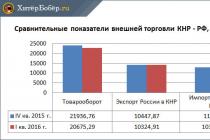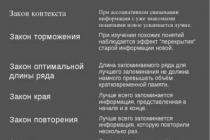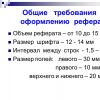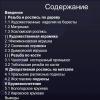The designers drew attention to the fact that, in addition to detection, it successfully copes with the task of accounting for artificial Earth satellites flying over the country's territory.
However, the station could not determine the purpose of the satellite. This is how the idea of creating a special complex for recognizing artificial Earth satellites was born. Its authors were the designers of NIIDAR and employees of the 45th SRI ".
"In 1974, I was appointed chief designer of the Krona 45Zh6 satellite recognition complex, and in 1976 I was released preliminary design. According to the project, the complex was to consist of the radio engineering part 40Zh6, which was based on the station 20Zh6, and the optical part 30Zh6.
Such a design would make it possible to obtain maximum information about flying satellites - from reflective characteristics in the radio range to photographs in the optical range. The optical part created at Astrophysics was supposed to consist of a large telescope and a laser illumination station, the development of which was started by the Leningrad Optical and Mechanical Association (LOMO).
We took up the radio engineering part with a dual-band (decimeter and centimeter) hemispherical viewing station and the computer complex of the 13K6 command and computer center common to all Krona facilities. The range of the radio engineering part is up to 3,200 km. The radar was supposed to provide guidance for the laser part of the 30Zh6 and be highly informative. We faced fundamentally new tasks, which should be solved taking into account the experience of previous developments.
The composition of the deputies - my main support - has changed a lot. V.P. Vasyukov, V.K. Guryanov, A.A. Myltsev, M.A. Arkharov received their own topics. V.M.Klyushnikov, V.M.Davidchuk, V.K.Shur left us untimely. However, the team formed new worthy leaders, and this allowed us to make a number of unconventional decisions in a timely manner.
For the radar-20Zh6, we chose a full-rotation headlamp of the decimeter range and full-rotation parabolic reflector antennas of the centimeter range. E.A. Starostenkov undertook the development of PAR phase shifters, and N.A. Belkin - for the modification of centimeter-range antennas. "Filled hand" E.V. Kukushkin, V.A. Rogulev, S.S. Zivdrg and V.S. Gorkin, ensured the setting and delivery of the PAR. The design of the antennas for both channels was carried out by the G.G. Bubnov Design Bureau, which is closely associated with Nizhny Novgorod factories - manufacturers of various antennas. The "meander" mode with linear frequency modulation was chosen as the type of radiation. This meant that the time of radiation and the time of reception were chosen close to the time of signal propagation to the target and back. The traveling wave lamp "Spring" and the klystron of the centimeter range "Verba", which had proven themselves well on the Danube-ZU radar, were chosen as generator devices. We had to develop high-voltage modulators for the "meander" mode for the first time. L.S. Rafalovich and G.V. Geiman made them on the basis of semiconductor elements.
The centimetric part of the 20Zh6 radar consisted of five posts that formed a phase-metric cross for highly accurate angular measurements in order to point the laser part of the 30Zh6. For centimeter receivers, V.N. Markov mastered low-noise input devices for the first time. The 13K6 computer complex based on the Elbrus-2 computer was created under the leadership of the chief designer E.E. Melentiev.
When choosing the location of the complex, it was necessary to take into account the special requirements of the optical part. The specialists of NIIDAR and the 45th SRI had to work hard. For future complexes of the KKP system, three locations were chosen.
It was decided to deploy the first Krona complex in the North Caucasus. This area has a particularly transparent atmosphere, which provides the most efficient work optical channel and allows you to transmit reliable data to the MCC. The complex deployed here was also supposed to monitor the Shuttles starting from Cape Canaveral. It was decided to place the second Krona complex in Tajikistan, near the Nurek hydroelectric power station, not far from the location of the Okno complex.
Located at the southernmost point, it was supposed to "intercept" American satellites flying in equatorial orbits. The construction of the complex began, but was stopped due to problems.
The third complex under the index "Krona-N" was decided to be built in the vicinity of the city of Nakhodka, Primorsky Krai. He was supposed to monitor satellites that were launched by launch vehicles from the US Western Test Site. The construction part of the complex was completed on time, but due to economic difficulties, the pace of work slowed down."
After the decision of the military-industrial complex on the construction, the choice of a specific installation site for the first complex began. In the Karachay-Cherkess Autonomous Region of the Stavropol Territory, on the outskirts of the village of Zelenchukskaya, the RATAN-600 radio astronomy telescope of the USSR Academy of Sciences was already operating.
Back in the early 1960s, one of the Leningrad teams, commissioned by the USSR Academy of Sciences, completed the project of the Zapovednik antenna for radio complexes of ultra-long-range space communications. The shield reflectors of the antenna had to be placed in a circle with a diameter of 2 kilometers, and the antenna itself had to have an area of 6,000 square meters. The project was considered by the commission of the Academy of Sciences of the USSR, but was not accepted because of the colossal cost. We decided to limit ourselves to a reduced copy of the "Zapovednik" antenna for the RATAN radio telescope with a diameter of 600 meters in order to conduct radio astronomy research, which was built in Zelenchukskaya.
It was decided to "attach" the complex of V.P. Sosulnikov to this habitable, explored place.
Upon learning of the intentions of the TsNPO "Vympel", Academician Alexander Mikhailovich Prokhorov was indignant, announced that the "Krona" complex would "clog" his RATAN and raised the alarm. TsNPO "Vympel" stood its ground and the disagreements reached the President of the USSR Academy of Sciences Anatoly Petrovich Alexandrov. Seeing that the matter was taking a serious turn, the Vympelites turned to the Ministry of Defense and the military-industrial complex. Soon A.P. Aleksandrov sided with the Ministry of Defense, and A.M. Prokhorov delicately explained that the military was right and should not be interfered with. Nevertheless, they decided to "push the crown" a little and build it near the village of Storozhevaya, about twenty kilometers from Zelenchukskaya.
Given the most common name for the place of deployment, hereinafter in the book the author uses the phrase separate radio engineering center in Zelenchukskaya. In the difficult mountainous conditions of the village of Storozhevoy, military builders under the leadership of Colonel-General K.M. Vertelov carried out the necessary set of engineering works, creating all conditions for seconded and operational personnel.
Survey work continued from 1976 to 1978, construction began in 1979. In accordance with the approved project of V.P. Sosulnikov, the complex included a command and computing center, a channel "A" radar, a channel "H" radar and a laser optical locator - LOL. The "A" channel radar was created on the basis of the "Danube-3" decimeter radar, and the "N" channel radar was based on the A-35 centimetric RCC system. In order to work out technical solutions, it was decided to deploy the means of the complex at the 51st site of the Balkhash test site.
By the early 1980s, the United States had significantly increased the number of military spacecraft in orbits with an altitude of 20,000 to 40,000 kilometers, and the Soviet leadership decided to speed up the construction of the Krona and Okno complexes.
In July 1980, a separate radio engineering unit for recognizing space objects was formed in Zelenchukskaya - military unit 20096. Colonel V.K. Bilykh became its first commander. However, due to lack of manpower and resources, work progressed slowly. By 1984, the installation of the equipment of the complex was completed. In the second half of the 1980s, faced with serious economic difficulties, the leadership of the Soviet Union was forced to reduce a number of military programs. It was decided to confine ourselves to only one Krona complex and introduce it as part of the first stage - a command and computing center and a decimeter range radar.
Narrated by A.A. Kuriksha.
"In 1987, the STC TsNPO Vympel was reorganized, which also affected the Design Bureau of V.G. began to seem too independent, often clashed with the leadership of the Center for technical issues. There were attempts to transfer SKB-1 to NIIDAR, but the team protested to the defense department of the Central Committee and to the minister.
As a result, we stayed at the NTC. Work on the Krona complex was completely transferred to NIIDAR. Again, my colleagues and I joined the work on the Krona at the stage of its docking with the Central Control Commission and testing. In 1992, factory tests of the radar and the command and control center were carried out, and state tests were completed in January 1994. Many of the indicators provided for by the tactical and technical assignment could not be achieved. Due to funding difficulties, work on the laser optical locator was not completed. The Krona complex of the first stage of construction was put on alert in November 1999.
The KRONA A1 complex is designed to detect and localize electronic devices secret information acquisition (EUNPI), transmitting data over a radio channel, using all known means of masking, identifying information leakage channels created by acoustic-parametric transformations, as well as for solving a wide range of radio monitoring tasks.
Allows detection of passive and semi-active acoustoparametric electromagnetic reflectors (endovibrators) in the frequency range from 30 MHz to 12 GHz.
The complex was developed on the basis of many years of experience in creating such systems and implements the most advanced EUNPI detection algorithms. The use of several detection algorithms, each of which is based on the individual principles of unmasking EUNPI, makes it possible to determine with a high degree of certainty the presence of EUNPI that have masking tools both in terms of modulation algorithms and transmission methods (EUNPI with digital data channels, with information accumulation, with tunable frequency, etc.).
"KRONA A1" can be used both for express analysis of the presence of radio transmitting EUNPI in a controlled room, and for long-term round-the-clock monitoring of the electromagnetic environment in one or more controlled rooms.
The KRONA A1 complex has an effective algorithm for extracting a useful informative signal in a complex interference environment, high precision measurements, which provides reliable results of the search for channels of speech information leakage, formed due to acoustic-parametric transformations.
Peculiarities:
- detection and localization of radio transmitting electronic devices for secretly obtaining information using all known means of masking;
- detection of passive and semi-active acoustic parametric electromagnetic reflectors (endovibrators);
- analysis of signals from several antennas using the built-in antenna switch;
- automatic recognition of digital data transmission channels;
- analysis of signals in power networks and low-current lines, detection of IR emitters;
- control of the frequency range, fixed frequencies, frequency grid;
- performance of complex tasks;
- main block;
- generator block;
- a set of two-component receiving and transmitting antennas with tripods for their installation;
- a set of antennas "ASHP-1" (4 pcs.);
- converter for research in power networks and low-current lines with a probe for detecting IR emitters;
- set of cables;
- active acoustic system that provides the required sound pressure in a wide frequency range;
- acoustic-parametric reflector simulator;
- special software;
- PC type laptop with a bag;
- impact-resistant sealed carrying cases;
- documentation set.
Monopulse secondary radar (MSSR) "KRONA" is manufactured using advanced technologies:
- - high-frequency components of the receiver and transmitter are made using thin-film technology in sealed structures filled with an inert gas;
- - emitters and devices of the beam-forming system of the antenna are made on strip lines filled with a dielectric;
- - cables between the antenna and the drive column, between the drive column and the interrogator, inside the antenna system are made using methods that exclude soldering of connectors to HF cables;
- - processing equipment uses signal processors, FPGAs and high-performance computers from Advantech;
- - high-frequency and mechanical structures operating outdoors have a design that is resistant to harsh conditions environment(tested in the conditions of the northern, southern seas, as well as the deserts of Central Asia).
The KRONA SSR uses monopulse technology, a fully solid-state interrogator and a large vertical aperture antenna. The system can be upgraded to S mode through hardware and software upgrades. In this case, changes in all equipment are not required.
Specifications
- 1. SSR generates interrogation signals in RBS and ATC modes in accordance with the requirements of ICAO and GOST 21800-89.
- 2. SSR processes response signals in RBS and ATC modes.
- 3. View area:
- - the minimum elevation angle is not more than 0.5 0 ;
- - maximum elevation angle not less than 45 0 ;
- - the minimum range is not more than 1 km;
- - maximum range of at least 400 km.
The specified zone is provided at zero closing angles and the level of false alarms Р l. m. \u003d 10 -6.
- 4. Operating frequencies:
- - on the request channel 10300.1 MHz (at ATC and RBS);
- - via the RBS 10903 MHz response channel;
- - via ATC response channel 7401.8 MHz.
Polarization at frequencies of 1030 and 1090 MHz - vertical, at a frequency of 740 MHz - horizontal.
- 5. Probability of getting additional information when the aircraft is in the main lobe of the antenna system (GLDN) and in the absence of interfering interrogation signals - not less than 0.98.
- 6. Root-mean-square error of measuring coordinates at the digital channel output:
- - at a distance of 50 m;
- - in azimuth 4.8 mґ for RBS;
- 6 ґ for ATC.
- 7. Resolution:
- - at a range of 100 m in RBS mode;
- 150 m in ATC mode;
- - in azimuth 0.6 0 in RBS mode;
- 0.9 0 in ATC mode.
- 8. Pulsed power on request and suppression channels? 2 kW.
- 9. Receiver sensitivity of sum, difference channels and channels
suppression is not worse than -116 dB / W.
- 10. The antenna system has the following parameters:
- - the level of the side lobes of the radiation patterns of the total and
differential channels -24 dB;
Beam width in the horizontal plane of the antenna
sum channel at f=1090 MHz 3 0 ; at f=740 MHz 3.5 0 .
11. Rotation speed: 6 rpm for highway and 15 rpm for airfield
MVRL options.
- 12. Pulse repetition frequency 150…300 Hz.
- 13. The antenna system ensures the operation of the SSR at wind speed
up to 30 m/s with icing up to 5 mm and without icing up to 40 m/s.
14. Power supply: 3 phases 380 V, frequency 50 Hz through two independent cables:
R cons. 20 kW - total power consumption with heating and air conditioning;
R cons. 6 kW - power consumption of radio-electronic equipment (REA) with antenna rotation.
15. Mean time between failures 4000 hours.
The principle of operation of the MVRL "KRONA"
The transmitter generates RF signals through two outputs: into the request and suppression channels (MD and OD), which, through switched RF paths and rotating transitions, enter the antenna and are radiated into space (Fig. 3.13).
Antenna system (AS) - a flat phased antenna array (PAR) with emitters. When emitted, the AU generates two radiation patterns (DN) at f=1030 MHz: total (MD) and suppression (MD), in which requests are transmitted to aircraft transponders ATC and RBS.
When receiving, the AU generates 3 RPs: sum, difference and suppression, at two frequencies - for RBS and ATC modes. Antenna weight 450 kg. Dimensions 80019010 cm.
The antenna system consists of 2 linear antenna arrays in a horizontal plane with a size of 780150 cm. The speaker consists of 34 radiation elements, each of which is a flat vertical module 1.5 m long.
Received by the antenna system from transponders aircraft OD and MD signals are sent through the corresponding channels of the HF paths, rotating transitions are fed to the switches of the sets, which switch the received signals to the inputs of the OD and MD receivers of the main set.
In the RBS MD receiver, signals are processed in the RBS band (1090 MHz), and in the PRM OD - in the ATC band (740 MHz). The receivers carry out amplification of signals, conversion to an intermediate frequency (f pr), detection, detection, suppression of signals received on the side lobes of the DND (BLDN) of the sum channel, conversion of the sum and difference signals into a deviation code from the equisignal direction (DCH) to determine the aircraft azimuth . The detection signals, the digital code of the channel amplitude and the digital code of the deviation from the RCH are sent to the response processor (PRP), where the primary processing of the radar image takes place.
The received information from the SbA goes to the secondary processing processor (PVO or GPR - the main processor of the radar).
Air defense carries out:
- - comparison of the newly adopted radar data with those obtained in previous surveys;
- - filtering false radar information;
- - formation of information codegrams and their transfer to consumers;
- - generation of receiver gain control codes (VAGC) and transmitter power control codes.
Information from the interrogator's cabinet is transmitted via modems via TLF communication cables to consumers (to ATC systems and terminals).
The MSSR transmitter has 3 modes of operation:
- 1 - combined ATC and RBS request mode;
- 2 - mode of separate ATC and RBS requests;
- 3 - combined request mode with ground speed request.
Each interrogator cabinet has 2 receivers - PRM OD and PRM MD. The construction structure of both receivers is the same. They differ only in the input frequency. For PFP OD f c =740 MHz, for PFP MD f c =1090 MHz. Each receiver has 3 independent, isolated channels: sum (), difference () and suppression (). Receivers amplify, convert signals and solve the problems of primary signal processing. Their specifications the following:
- - intermediate frequency f pr = 60 MHz;
- - bandwidth P = 8 MHz (at the level of 3 dB);
- - dynamic range D 70 dB;
- - receiver sensitivity is not worse than -116 dB/W;
- - noise figure K w 4 dB;
- - selectivity for the image channel (60 dB).
The PRM control device (UK) is built on the basis of a micro-computer and provides:
- - monitoring the serviceability of the PRM units and transferring the results of the control to the ASC controller;
- - control of the control generator module;
- - sensitivity control of sum, difference channels and suppression channel;
- - identity control (linearity, steepness of transfer characteristics) of the sum and difference channels and their correction on the RAM;
- - implementation of the channel for converting the difference in amplitudes and channels into an angular deviation from RHA () during control.
All control measurements are made at the non-operating range of the locator after the pulse “IMP. CONTR” coming from the synchronization section through the PRM interface device.
PRM interface device (US) receives synchronization signals: ZAP. Pro (ND ATC, ND RBS), IMP. BACK, NORTH, REC. VARU and strobes of request modes BN, TI, TrS, A, C. In US, the 14-bit binary azimuth code is converted into an 8-bit binary code.
At the end of 2013, the Russian Defense Ministry is going to test a modernized version of the Krona anti-satellite complex, the Izvestia newspaper reports, citing its own sources in the Russian General Staff. Work on the creation of this complex was started back in the USSR, but due to the suspension of funding, they were stopped. According to information contained in open sources, the Krona complex took up combat duty only in 2000 and consists of 2 main parts: a laser-optical radar and a radar station.
According to the plans of the Ministry of Defense, the dates and plans for testing the modernized Krona anti-satellite defense system are scheduled for the end of 2013. It is reported that the main emphasis will be placed on the interaction of various components, especially strike weapons with ground-based ROK - a radar-optical complex for searching and identifying space targets. It is reported that the radars of the complex, which still have the old Soviet index 45Zh6, were released in the 1980s, but during 2009-2010 they were modernized and passed state tests. According to the officers of the General Staff, they have no complaints about the ROC itself.
Radar 20Zh6 complex "Krona"
Radio-optical complex for recognition of space objects "Krona"- This is an object of the outer space control system, which includes 2 operating systems - a radio band and an optical one - is part of the Russian Space Defense Forces. This complex monitors outer space with the help of observations both in the active (laser location) and in the passive mode. After computer processing, the data obtained by him are sent to the Central Control Center - the Center for Control of Outer Space.
Work on the creation of the ROK RKO "Krona" was started in accordance with the decree of the USSR government of November 1984. The construction of the facility was carried out by NII PP and OAO NPK NIIDAR. The beginning of work on its creation had to Soviet time, but the beginning of perestroika and the collapse of the country significantly slowed them down. In 1994, test and experimental work was carried out at the facility, and in 2000 the complex finally took up combat duty. In 2010, it underwent modernization, during which it received a high-precision radar channel "N", designed to determine the position and recognize targets in Earth's orbit.
The 45ZH6 Krona radar-optical recognition system for space objects is designed to recognize various space objects for military purposes, as well as information and ballistic support for anti-space defense operations and active means of anti-missile defense of the country. The complex originally included:
- radio engineering part of the complex 40Zh6 with radar 20Zh6, which has 2 main channels of operation: channel "A" is designed to detect artificial Earth satellites and channel "H", designed for especially accurate angular measurements of the parameters of artificial Earth satellites;
The 20Zh6 radar can operate in the decimeter (channel "A") and centimeter (channel "H") ranges. The radar is able to detect a target 3500 km away.
Channel "A" - is a transmit-receive antenna array with an aperture of 20 × 20 m and electronic beam scanning, a phased antenna array (PAR).
Channel "H" - a receiving-transmitting system consisting of 5 rotating parabolic antennas, which operate on the principle of an interferometer, due to which they allow quite accurately measuring the elements of the orbit of space objects.
- the optical means of the system consist of a laser-optical locator (LOL) "30Zh6"(since 2005), which includes: receiving and receiving-transmitting channels, the Passive Channel for Autonomous Detection (CAO) of space objects, which patrols in order to search for previously unknown space objects.
- command and control center, equipped with a 13K6 computer complex with a 40U6 computer (back in Soviet times).
 The current complex "Krona" on Mount Chapal
The current complex "Krona" on Mount Chapal
The capabilities of the Krona complex to determine the coordinates of space objects made it possible to use it as a means of guiding anti-space defense systems. In the USSR, it was planned to build 3 similar complexes, which were supposed to block the entire southern border of the country. The only operating complex is currently located on the territory of Karachay-Cherkessia on the top and in the vicinity of Mount Chapal at an altitude of 2200 m.
The entire system of ROK "Krona" functions with the interaction of all 3 channels: so the channel "A" of the radar finds a space object and measures its orbital characteristics, using which the channel "H" is directed to a given point and carries out its work. At the same time, according to the trajectory data of channel "A", an optical passive or active channel begins to work, which collects its information about the detected object.
As a result of such interaction, it is possible to significantly improve the accuracy and detail of information about the detected space object. Wherein the throughput of the entire complex is estimated at the level of about 30,000 objects per day.
Since the anti-satellite system was designed not only to detect space objects, but also to destroy them, an anti-satellite aviation complex 30P6 "Kontakt" consisting of: the MiG-31D carrier aircraft and the 79M6 "Kontakt" interceptor missile, which had a kinetic warhead.
Before its collapse, the Soviet defense industry was able to upgrade 3 MiG-31 supersonic high-altitude interceptors, which were tasked with delivering anti-satellite missiles to the upper atmosphere. Such aircraft received an additional letter "D" in the name. All 3 MiG-31Ds manufactured in the USSR in the early 1990s were sent to the Kazakh Sary-Shagan training ground, where they later remained. There is still no official evidence that the 79M6 "Kontakt" interceptor missile was tested in the USSR.
 Supersonic high-altitude interceptor MiG-31D
Supersonic high-altitude interceptor MiG-31D
The new state first tried to use the MiG-31D fighters that remained on the territory of Kazakhstan for commercial purposes, trying to adapt them for launching small-sized space rockets. However, the Kazakh project ended in failure and at present these aircraft are simply dead. The revival of a large-scale anti-satellite defense project began only 18 years after the collapse of the USSR. In 2009, the then Commander-in-Chief of the Russian Air Force, Colonel General Alexander Zelin, announced that the base would be reanimated to solve the same tasks.
If there is at least some information about the ground components of the Krona complex that can be easily found on the Internet, then its air component is much more secret. At present, it is only known that work on the creation of a new anti-satellite missile, which should replace the Kontakt, is being carried out by the Fakel design bureau, located in Khimki near Moscow. The same design bureau specializes in the development of rocket and space technologies, but it refused to inform journalists about new products for Krona.
Along with this, there is no information about the modernization of a new batch of MiG-31 supersonic fighter-interceptors, which will have to replace the aircraft lost in Kazakhstan. At the same time, Izvestia's sources in the defense industry say that bringing the aircraft to modification "D" is not a particular problem.
From such an aircraft, all suspension and attachment points, the onboard radar are dismantled, the radio-transparent dome is replaced with a metal one. At the ends of the wings of a fighter for a more stable flight with a vertical climb, special aerodynamic influxes are installed, which are called "flippers". They are also used to stabilize the flight of the MiG-31 with an anti-missile suspended under the fuselage, since it has a large mass and dimensions, and the wing area of the aircraft does not allow for a stable flight with it. After that, a new communication complex and an aiming system are installed on the aircraft.
 Space Control Center
Space Control Center
The Ministry of Defense of the Russian Federation explained that in the upcoming tests they will check the possibility of issuing target designation to strike aircraft from the ground, as well as the interaction between the air and ground components of the Krona. At the same time, at the initial stage, instead of the MiG-31D, ordinary MiG-31s from the Russian Air Force will be used. The editor of the MilitaryRussia website and military expert Dmitry Kornev believes that the algorithms and logic of combat work, ground equipment can be used and what was created back in the 1980-1990s.
At the same time, the rocket will most likely need a new one, which will be created by the forces of the same Fakel, Novator, and Vympel design bureaus. At the same time, he did not rule out the reorientation of the entire system, for example, to ground-based missiles. In the event that Krona is indeed equipped with ground-based missiles, it becomes clear why the air component of the anti-satellite complex is so classified. In this case, it simply does not exist and never will.














